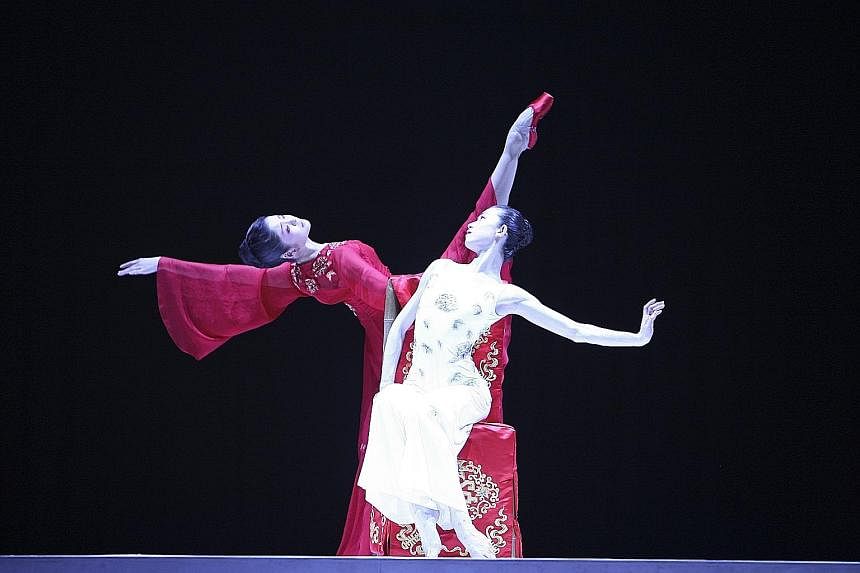NEW YORK • "Our aim in the cultural sphere is to build a new Chinese national culture," Mao Zedong wrote in 1940, more than two decades before the start of the Cultural Revolution. Since then, China has undergone a series of profound cultural shifts, many of which the Chinese leader could never have predicted.
Change has come to every sphere, including ballet, a relatively recent import that has nonetheless played a role in the country's re-evaluation of its performance traditions and aesthetic ideals.
The National Ballet of China comes to the David H. Koch Theater as part of the Lincoln Center Festival.
The company is performing two ballets: The Red Detachment Of Women, now half a century old, and Peony Pavilion (2008). Red Detachment, one of the works most closely associated with the Cultural Revolution, has been danced thousands of times, in China and abroad.
Peony Pavilion, by contrast, is a sophisticated hybrid. It looks back to the Chinese theatrical traditions of Kunqu and to the European modernism of Debussy and Ravel, while also reflecting recent trends in stage and costume design.
As its choreographer Fei Bo wrote in an e-mail exchange through a translator: "Our goal is to bring new life to the classics" - the great stories of China's literary past - "using the language of our time. We combined ballet and traditional operas and bring new life to this ancient art form".
The history of ballet in China dates from the years after the 1917 Bolshevik Revolution, when Russian emigres, including former dancers, settled in a handful of cities.
After the establishment of the People's Republic of China in 1949, an official national school modelled on the Russian training system was founded in 1954. Five years later, a company was formed.
In the early 1960s, as a consequence of a parting of ways between China and the Soviet Union, the Russians left. Chinese ballet was faced with the need to forge an identity of its own.
The result was The Red Detachment Of Women, a ballet about an oppressed young farm worker who joins a women's unit of communist fighters to defeat a local tyrant.
Since the 1980s, the doors to the larger dance world have opened, allowing the introduction of a steady stream of new works and guest teachers in China. The National Ballet now performs works by William Forsythe, Roland Petit and John Neumeier.
Nevertheless, said Chinese studies professor Emily Wilcox at the University of Michigan, "ballet remains viewed largely as a foreign art in China".
In an attempt to widen its appeal, choreographers have increasingly turned to Chinese themes, and Peony Pavilion is a prime example. Its story is drawn from a well-known 16th century opera about a first love so passionate that it transcends the boundary between reality and dreams and between life and death.
The result is a work that is deeply Chinese, but also reflects the look and feel of European contemporary ballet.
"We choose Chinese stories to express our feelings to the world", while also busily absorbing the latest ballet trends from abroad, the company's artistic director, Feng Ying, said.
NEW YORK TIMES

